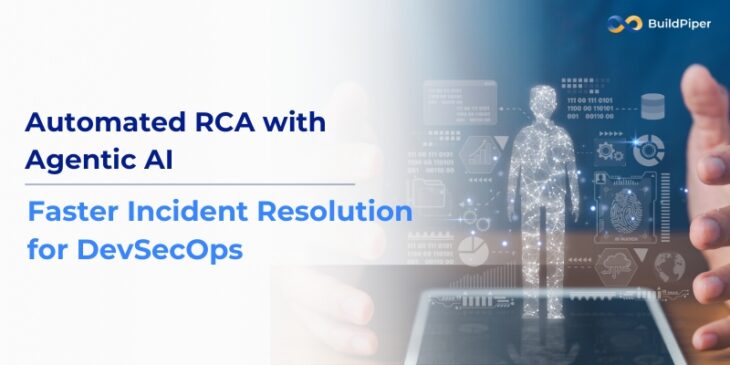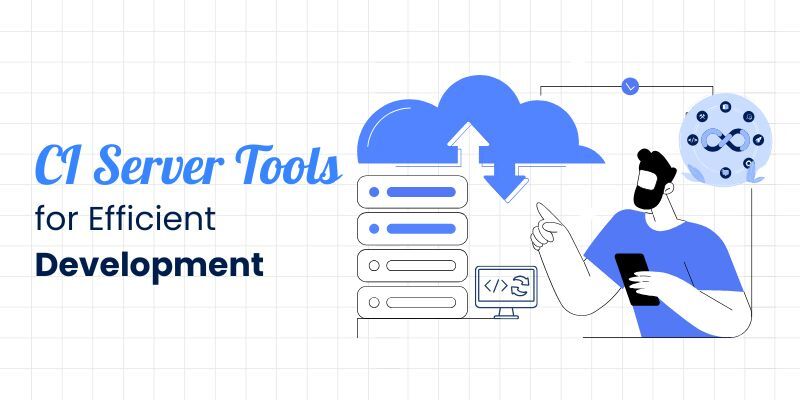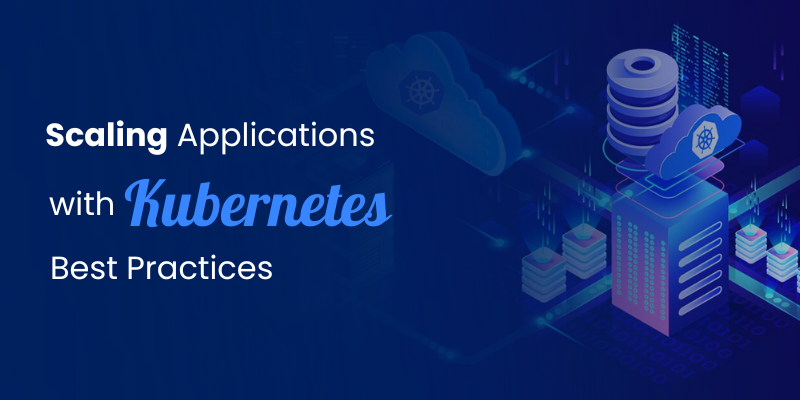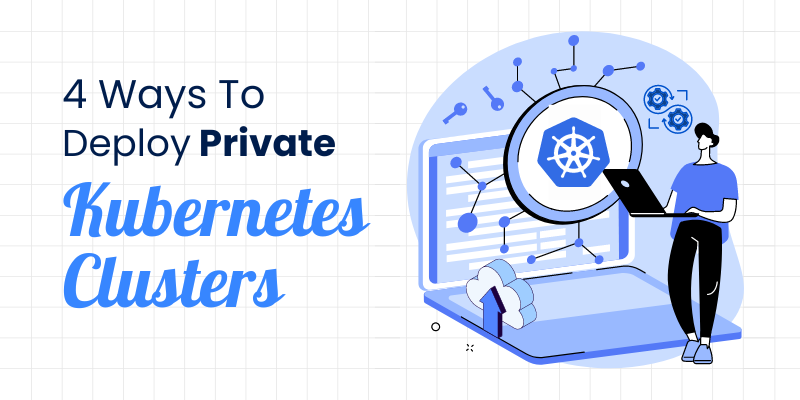
Incidents are inevitable in complex DevSecOps systems. What separates high-performing teams from the rest is how quickly they can identify the root cause and restore stability. Traditional troubleshooting methods often fall short (manual log reviews, fragmented monitoring dashboards, and alert fatigue) slow down response times. That’s where automated Root Cause Analysis (RCA) powered by Agentic AI comes in, turning hours of detective work into minutes of insight.
This article unpacks what Root Cause Analysis really means in a DevSecOps context, why AI agents are changing the game, and how enterprises can adopt automated RCA tools to achieve faster, more accurate, and cost-effective incident resolution.
What is Root Cause Analysis in DevSecOps?
Root Cause Analysis (RCA) is the process of identifying the fundamental reason behind a system failure or security incident. In DevSecOps, RCA goes beyond surface-level symptoms, it aims to pinpoint the underlying technical or process flaw that triggered the chain of events. For example:
- A spike in latency might trace back to a misconfigured load balancer
- A data breach might ultimately result from a missed patch in a third-party library
- An outage could stem from an unnoticed resource exhaustion in cloud infrastructure
The problem is that DevSecOps systems generate enormous volumes of logs, metrics, traces, and alerts. Human operators alone can’t sift through this noise quickly enough during a crisis. That’s why automated RCA and specifically AI-driven RCA tools are becoming indispensable.
The Case for Automated Root Cause Analysis
Manual RCA is too slow for today’s uptime and compliance requirements. A single incident can cost enterprises anywhere from thousands to millions in lost revenue, regulatory penalties, or brand damage. Automated RCA tools provide three key advantages:
- Speed – AI agents analyze high-dimensional data across systems in seconds.
- Accuracy – Machine learning models reduce false positives and highlight actual cause-effect relationships.
- Consistency – Automation ensures the same process is followed every time, minimizing human error.
Here’s the thing: speed without accuracy is dangerous. If your team rushes to a wrong conclusion, you can introduce new risks. Automated RCA with AI balances both, surfacing the right root cause quickly and reliably.“11111
How AI Agents Improve Accuracy in Root Cause Analysis
AI agents for Root Cause Analysis in DevOps and Cloud monitoring bring unique strengths:
- Causal Inference – Instead of correlating metrics blindly, AI agents build cause-effect chains
- Pattern Recognition – Algorithms detect recurring anomalies across logs and traces.
- Context Awareness – Agents consider environment metadata like deployment changes, user traffic spikes, or security patches.
- Adaptive Learning – Over time, models learn from past incidents to improve predictions.
For example, imagine an e-commerce outage traced to a database deadlock. Traditional monitoring would show CPU spikes, slow queries, and failing API calls (symptoms scattered across dashboards). An AI-driven RCA tool would stitch these signals together, recognize the deadlock pattern and point directly to the failing transaction sequence. Resolution moves from guesswork to guided action.
[Also read a similar blog: AI for DevOps ]
Automated RCA in Action: A Comparison
To understand the business impact, let’s compare manual versus automated RCA approaches.
| Aspect | Manual RCA | Automated RCA with Agentic AI |
|---|---|---|
| Time to Identify Root Cause | Hours to days, depending on incident severity | Minutes, often under 15 minutes |
| Data Coverage | Limited to what engineers can manually check | Full-stack logs, metrics, traces, configs, security |
| Accuracy | High risk of false positives or misdiagnosis | AI agents improve accuracy with causal analysis |
| Scalability | Doesn’t scale with growing infra complexity | Scales across hybrid, multi-cloud, and containerized systems |
| Business Impact | Prolonged downtime, higher costs | Faster recovery, reduced SLA breaches, improved trust |
What this really means is that automated RCA is an operational shift that transforms incident response from reactive firefighting to proactive resilience.
Why DevSecOps Needs Automated RCA Now
DevSecOps teams operate in environments where speed and security must coexist. Automated RCA aligns with both priorities:
- For Operations Leaders (CIOs, CTOs): It reduces Mean Time to Resolution (MTTR), directly improving service availability and customer satisfaction
- For Security Leaders (CISOs): It strengthens defenses by identifying the true source of vulnerabilities, not just patching over symptoms.
- For Business Leaders: It protects revenue by minimizing downtime and ensuring regulatory compliance
The biggest outcome is trust. Customers expect uptime, regulators expect compliance and stakeholders expect reliability. Automated RCA with AI delivers on all fronts.
Best Practices for Adopting Automated RCA Tools
Transitioning to AI-driven RCA doesn’t mean replacing engineers. Instead, it augments their expertise with machine precision. Here’s how decision-makers should approach adoption:
- Start with High-Value Use Cases – Focus on recurring incidents that consume the most time or revenue.
- Integrate with Existing Toolchains – Ensure RCA tools work seamlessly with CI/CD pipelines, observability platforms, and incident management systems.
- Prioritize Explainability – Decision-makers and regulators will demand to know why the AI flagged a cause. Look for tools with transparent reasoning
- Invest in Feedback Loops – Let engineers validate and refine AI outputs to improve accuracy over time.
- Think Multi-Cloud and Hybrid – Choose tools that scale across AWS, Azure, GCP, Managed Kubernetes, and on-prem systems
The Future: Agentic AI in RCA
Agentic AI represents a step beyond static automation. Instead of passively analyzing data, AI agents can take proactive action: rolling back faulty deployments, isolating compromised nodes or even generating playbooks for future incidents. Imagine an RCA tool that not only pinpoints the problem but also recommends (or executes) the fix.
This shift from diagnostic to prescriptive automation will redefine DevSecOps operations in the next few years. Leaders who invest early will gain a competitive advantage in resilience, compliance and customer trust.
Conclusion
Automated Root Cause Analysis is a board-level concern. As systems grow more complex and the cost of downtime skyrockets, relying solely on human troubleshooting is no longer sustainable. AI in Root Cause Analysis brings the speed, accuracy, and scalability required to keep digital enterprises running smoothly.
For decision-makers, the message is clear: adopting automated RCA tools with agentic AI isn’t optional. It’s the path to faster incident resolution, stronger security and sustainable business outcomes.
Frequently Asked Questions
1. What is Root Cause Analysis (RCA) in DevSecOps?
It’s the process of identifying the fundamental issue behind a failure, outage or security incident instead of just addressing surface-level symptoms.
2. How do automated RCA tools work?
They use AI and machine learning to analyze logs, metrics and traces across systems, detect patterns, and quickly pinpoint the real cause of incidents.
3. Why is automated RCA better than manual RCA?
It’s faster, more accurate, scales with complex cloud systems and reduces costly downtime.
4. How do AI agents improve RCA accuracy?
AI agents apply causal inference, pattern recognition and context-awareness to reduce false positives and connect the dots across data sources.
5. Who benefits most from automated RCA in DevSecOps?
CIOs, CTOs, and CISOs benefit from reduced MTTR, improved compliance and higher system resilience while businesses see better uptime and trust.



